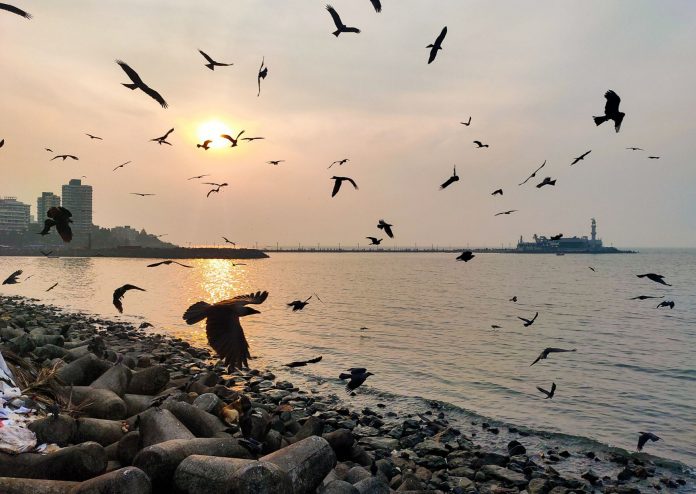Mumbai is home to a unique spectacle of the battle for space. In no other city in India is there such a stiff struggle for every square inch of land area. Even with such a tussle for space, the people have managed to sneak in tiny spots of worship all around the city. These spaces are a reflection of the mindset of the people themselves, wherein, although most of their life revolves around monotonous and mundane pursuits of making a living, there is some space in their hearts reserved for the acknowledgement of god!
This idea is also proved by the way Mumbaikers pray. Very few people linger in a temple for more than 20 mins in this city! It is usually a quick prayer on the way to work that they seem to devote to the pursuit of god. This is true across the religions in this glorious City of Dreams.
The modern man seems lost in an effort to understand God. Blurred by his mundane yet highly complicated lifestyle he hardly has the time or the will to try and understand the real message behind any religion. But even in a brute city like Mumbai people have managed to create space, both in their hearts and in their surroundings, to acknowledge the divine.
Apart from visiting the other popular places in Mumbai, you must also visit its religious spaces to truly understand the beauty of Mumbai.
The Global Pagoda, Borivali west
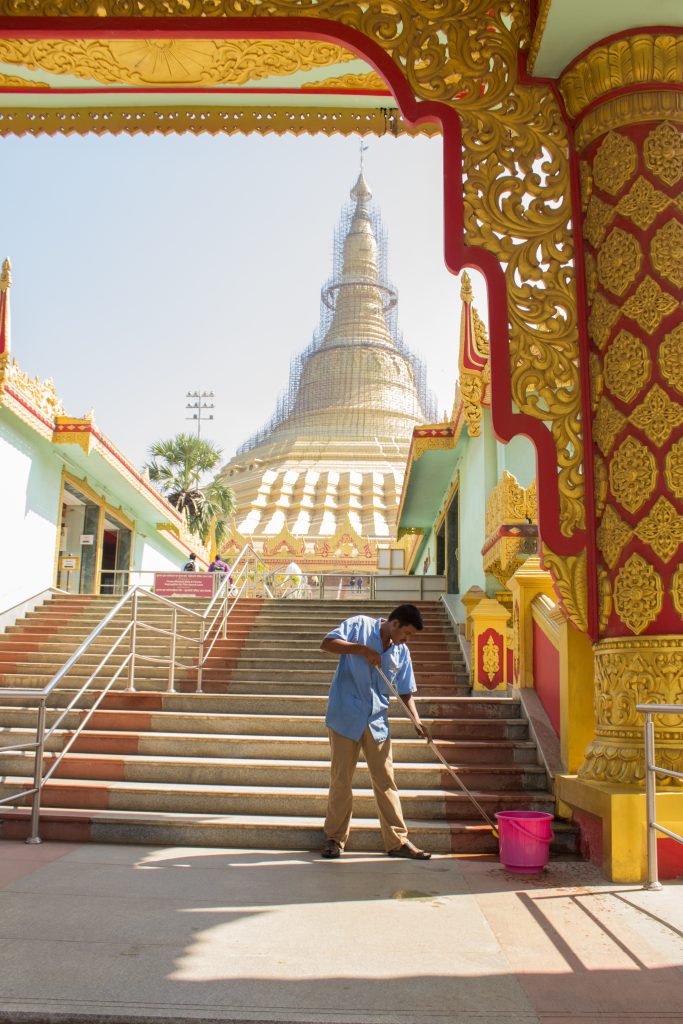
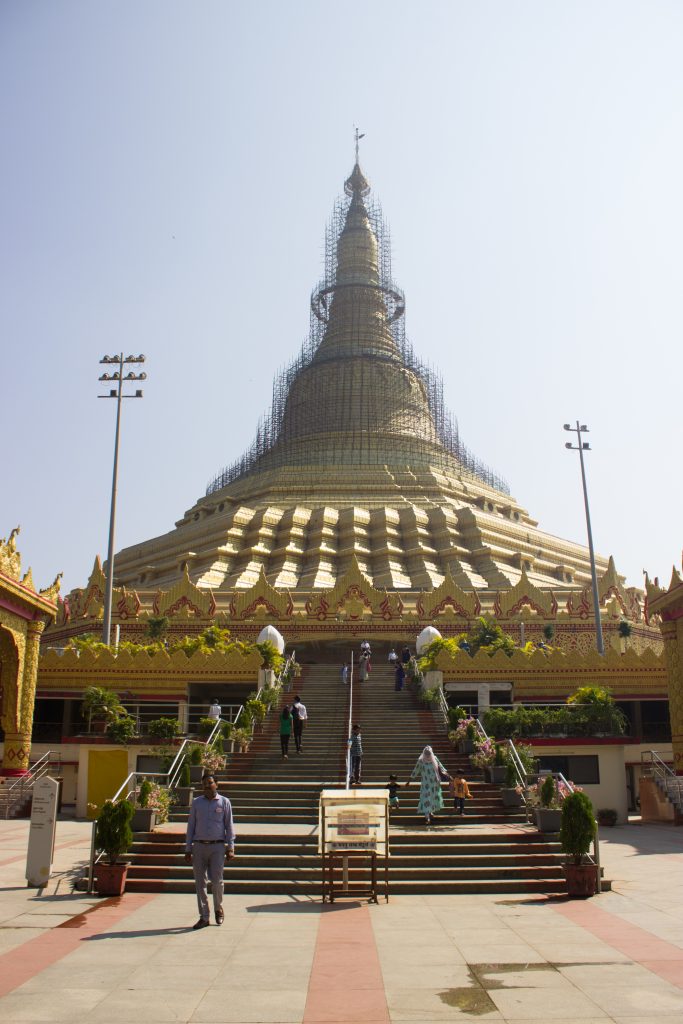
A youth cleans the steps leading to the Global Pagoda. In Buddhism everyday duties of a man, no matter how petty or big, are an integrated part of his striving for the supreme.
Buddhism holds one of the simplest philosophies ever offered by any world religion towards self-realization. Gautama Buddha’s greatest achievement was teaching mankind that God lies not as an external entity, but in inner realization.
The Global Pagoda, located in Borivali West, was constructed with the aim of expressing gratitude to Gautama Buddha for dispensing universal teaching for the eradication of suffering, to reveal the truth about the life of Buddha and his teachings, and to provide a place for the practice of Vipassana meditation.
The Afghan Church at Colaba
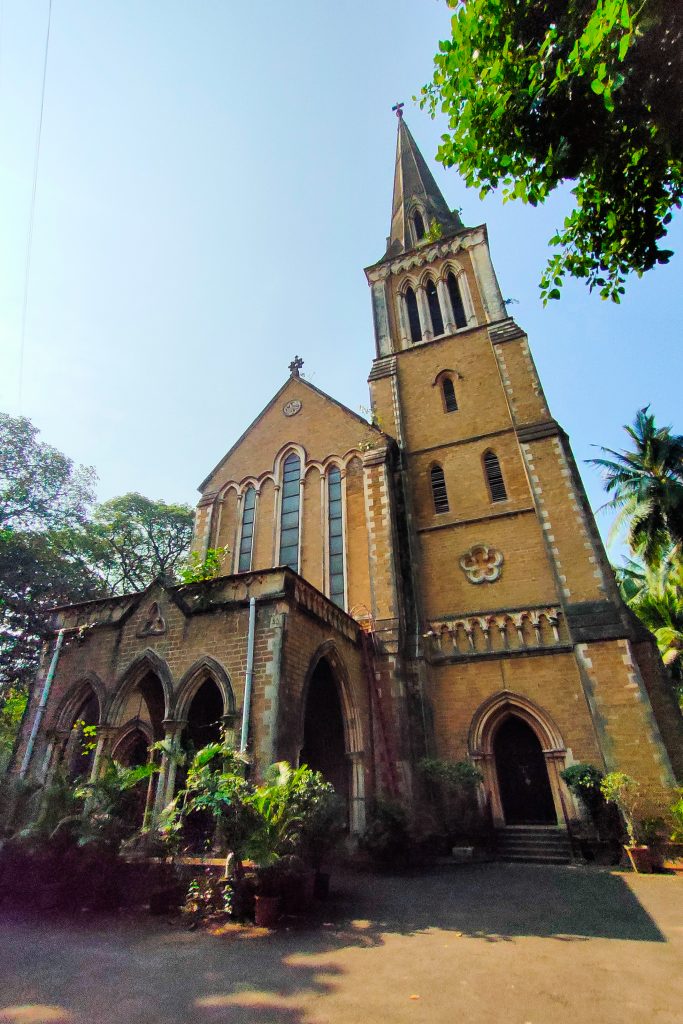
Christianity rose as an organized Abrahamic monotheistic religion based on the life and teachings of Jesus of Nazareth. It spread to Europe under Emperor Constantine the Great and eventually made its way to India through the European traders. It was the British Raj that truly solidified the presence of religion in the sub-continent. Bombay was a British stronghold and thus is home to some of the earliest and most beautiful churches in the country.
The Afghan Church at Colaba was built in memory of those who died in the First Afghan War of 1838. It has one of the most expensive spires; The 198-foot structure was built in 1850 at the ‘then’ mammoth cost of Rs. 5 lakh. Here you can admire the stained glass windows and the chancel that is inscribed with names of officers who died in the First Afghan war.
Mount Mary Basilica, Bandra
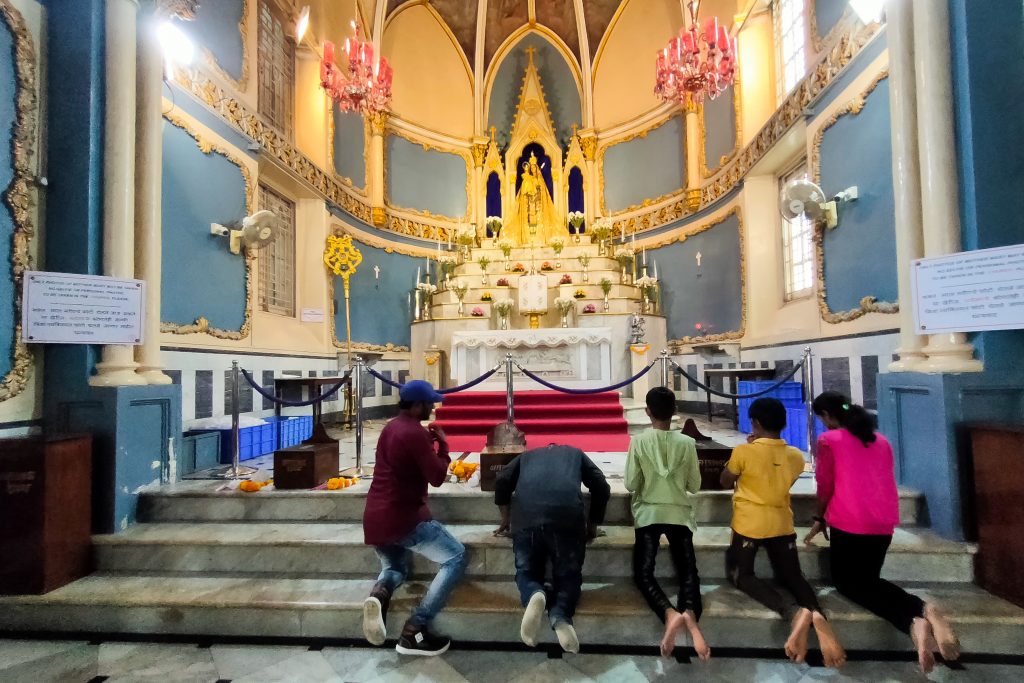
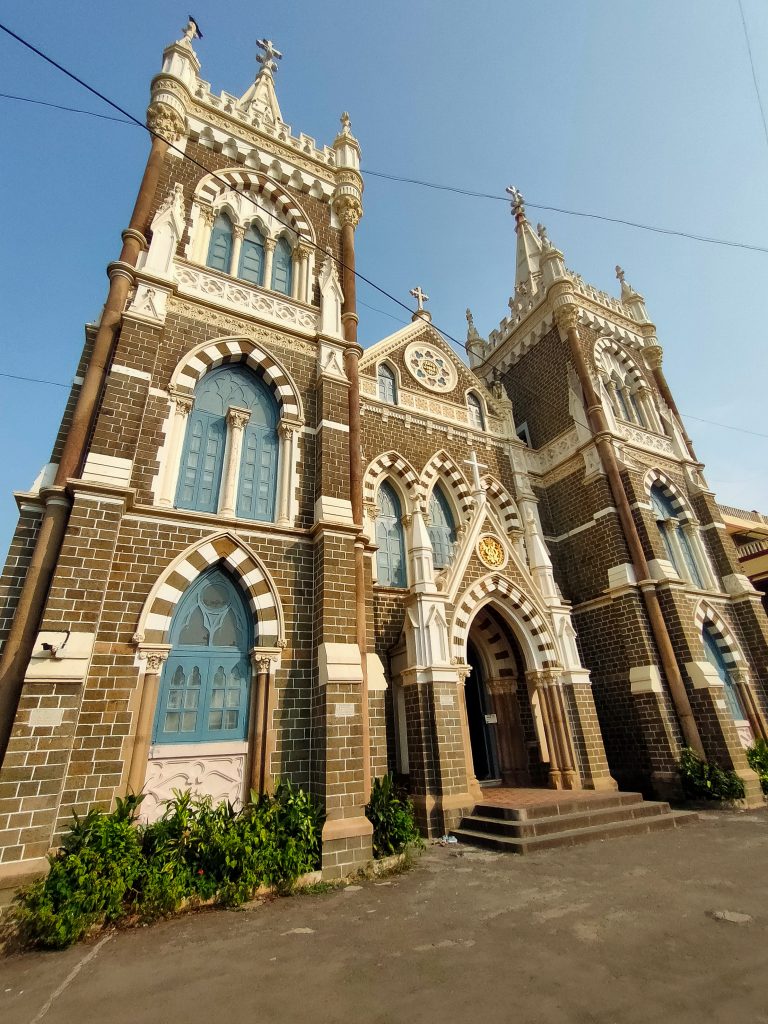
It stands on a hillock, about 80 meters above sea level overlooking the Arabian Sea. Although the current church edifice is just 100 years old, the history behind the current statue of Our Lady goes back to the 16th century when Jesuit priests from Portugal brought the statue to the current location and constructed a chapel.
The Knesset Eliyahoo, Kala Ghoda
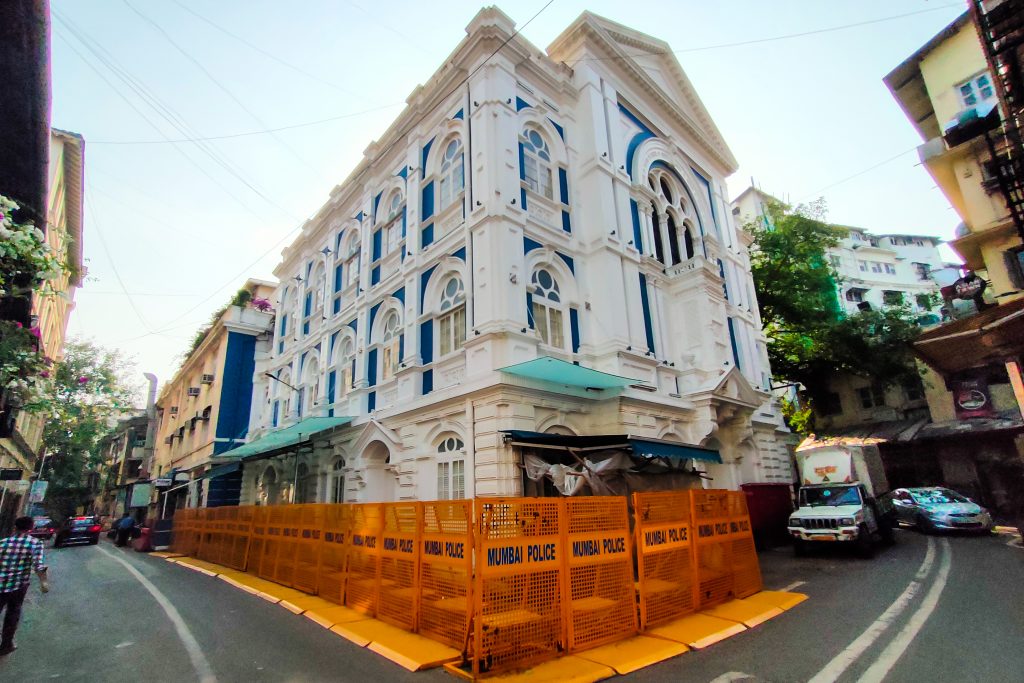
The Knesset Eliyahoo is an Orthodox Jewish synagogue located at Kala Ghoda. It was established in 1884 by Jacob Elias Sassoon, son of Eliyahoo David Sassoon and grandson of David Sassoon. The Jewish merchant community, which played a significant role in the commercial development of Bombay, consisted of Jews from Iraq, Syria, and other Middle Eastern countries who immigrated in the late 18th century under the threat of persecution.
The Mumba Devi, Bhuleshwar, South Mumbai
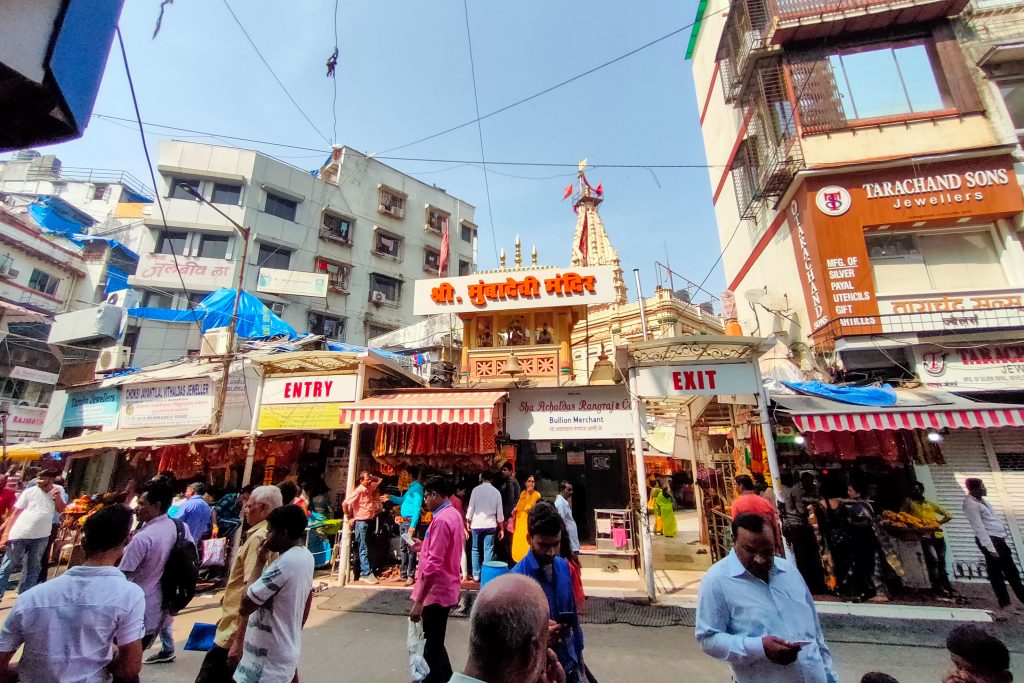
The Mumba Devi temple is nestled amidst the cotton and steel markets of Bhuleshwar, South Mumbai. It is because of this temple that Bombay gets its modern name “Mumbai”. Said to have been built in 1675, it is dedicated to the goddess Mumbā, the local incarnation of the Devi (Mother Goddess).
Babulnath temple, Girgaum Chowpatty
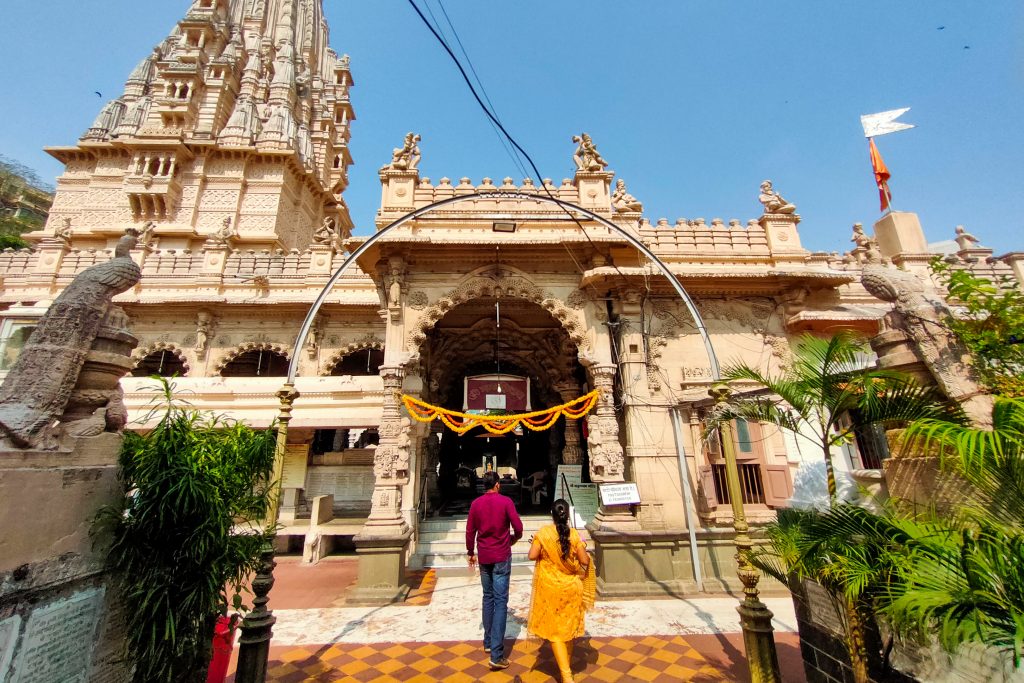
Babulnath is an ancient temple dedicated to Lord Shiva who precedes here in the form of the Lord of the Babul tree. Babulnath Shiva Linga and idols were originally consecrated in the 12th century by the then Hindu king Bhimdev of the region. Over a period of time the temple was buried and lost. The idols were re-discovered (unearthed) during the period of 1700 to 1780. The first temple was built in the 1780 year.
Babu Amichand Jain Temple, Malabar Hill
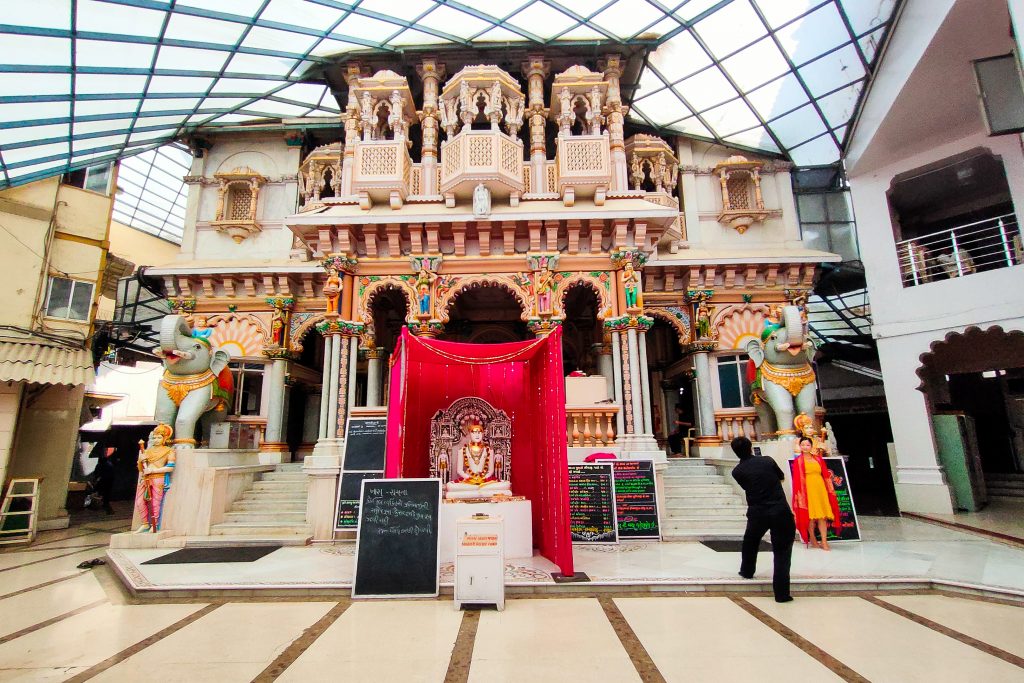
A young couple take pictures against Babu Amichand Jain Temple, located on the Malabar Hill, South Mumbai.
The temple was built in 1904 and belongs Shwetambar sect of Jainism. This Jain temple is famous for their old carving work and beautiful architecture, colors, Paintings etc. This temple is dedicated to Adishwarji(Rishabhanatha), the first tirthankara of Jainism. Moolnayak of this temple is a white coloured idol of Adishwarji.
Gautama and Mahavira were not only contemporaries in time, their ideologies were also very similar. The main religious premises of Jainism are ahiṃsā (non-violence), anekāntavāda (many-sidedness), aparigraha (non-attachment) and asceticism. Devout Jains take five main vows: Ahiṃsā (non-violence), Satya (truth), Asteya (not stealing), Brahmacharya (celibacy or chastity or sexual continence), and Aparigraha (non-attachment).
Makdhoom Shah Baba Dargah, Malad West
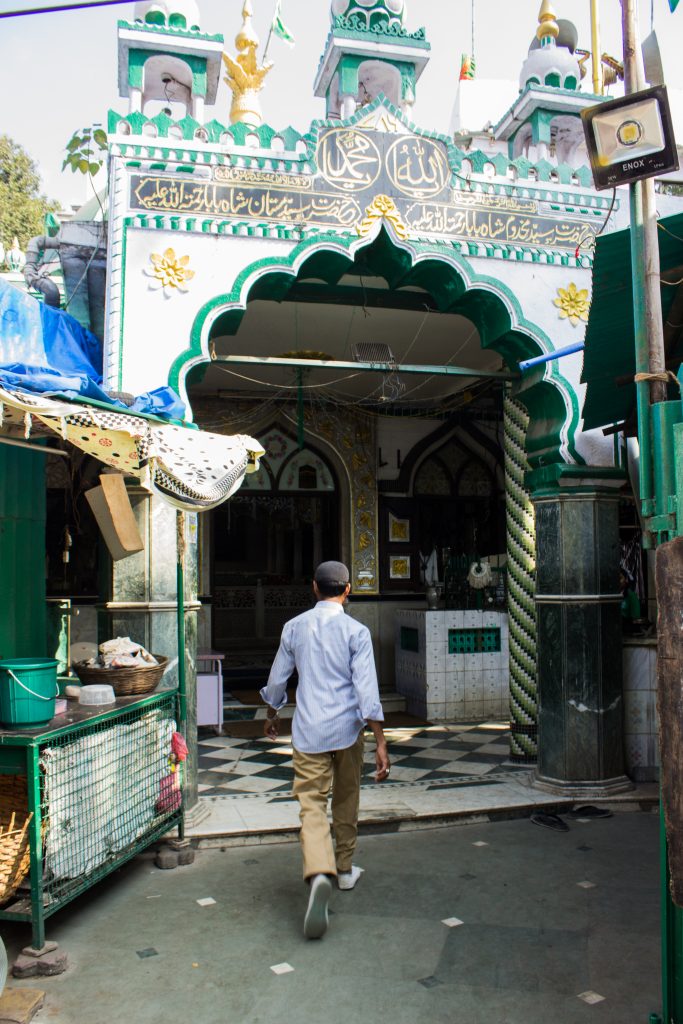
A young man walks into Makdhoom Shah Baba Dargah, Malad West. The Dargah is dedicated to Makhdoom Ali Mahimi Shafi’i (1372–1431 A.D) a saint and scholar of international repute. He lived during the time of the Tuglaq dynasty and that of Sultan Ahmed Shah of Gujarat. Mahimi was born into a family of Arab travellers from Iraq who had settled down on the island of Mahim, one of the seven islands that later formed the city of Bombay.
Haji Ali Dargah, South Mumbai.
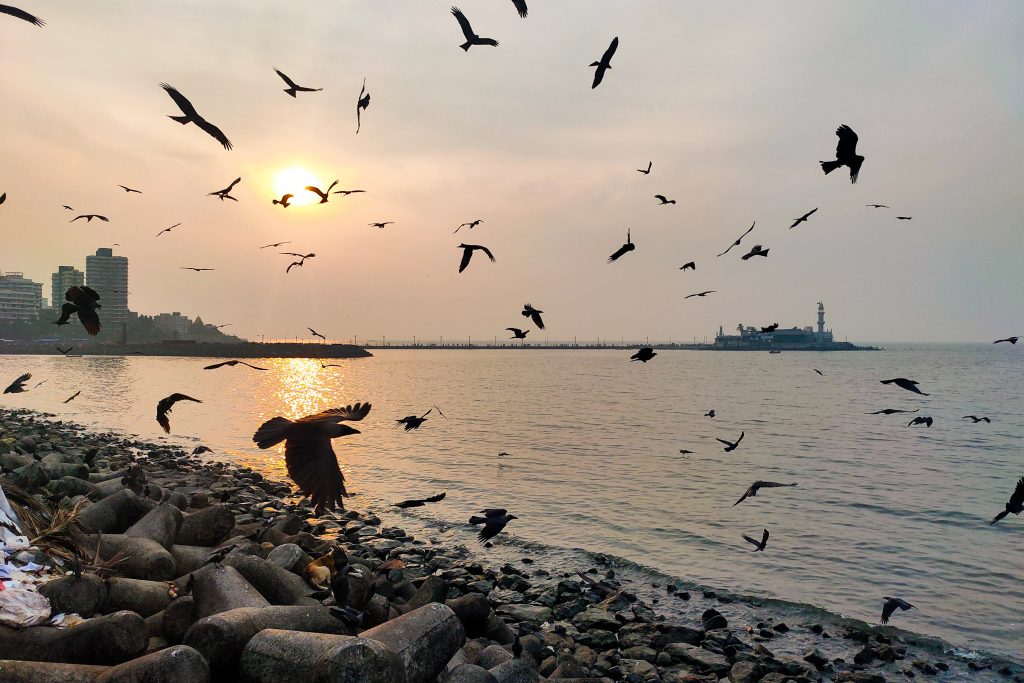
Youngsters enjoy the sunset from across Haji Ali Dargah, South Mumbai.
The Dargah is built on a tiny islet located 500 meters from the coast, in the middle of Worli Bay. The Haji Ali Dargah was constructed in 1431 in memory of a wealthy Muslim merchant, Sayyed Pir Haji Ali Shah Bukhari, who gave up all his worldly possessions before making a pilgrimage to Mecca. Hailing from Bukhara, in present-day Uzbekistan, Bukhari travelled around the world in the early to mid 15th century and eventually settled in present-day Mumbai.
Most religious spaces in Mumbai offer a quick getaway from the hustle of the city. These spaces double as not only places of worship but also places for a short excursion. It is very common to find both the young and the old in these places. Some visit for a serious communion with God, while others just to “chill” with friends and family.





















